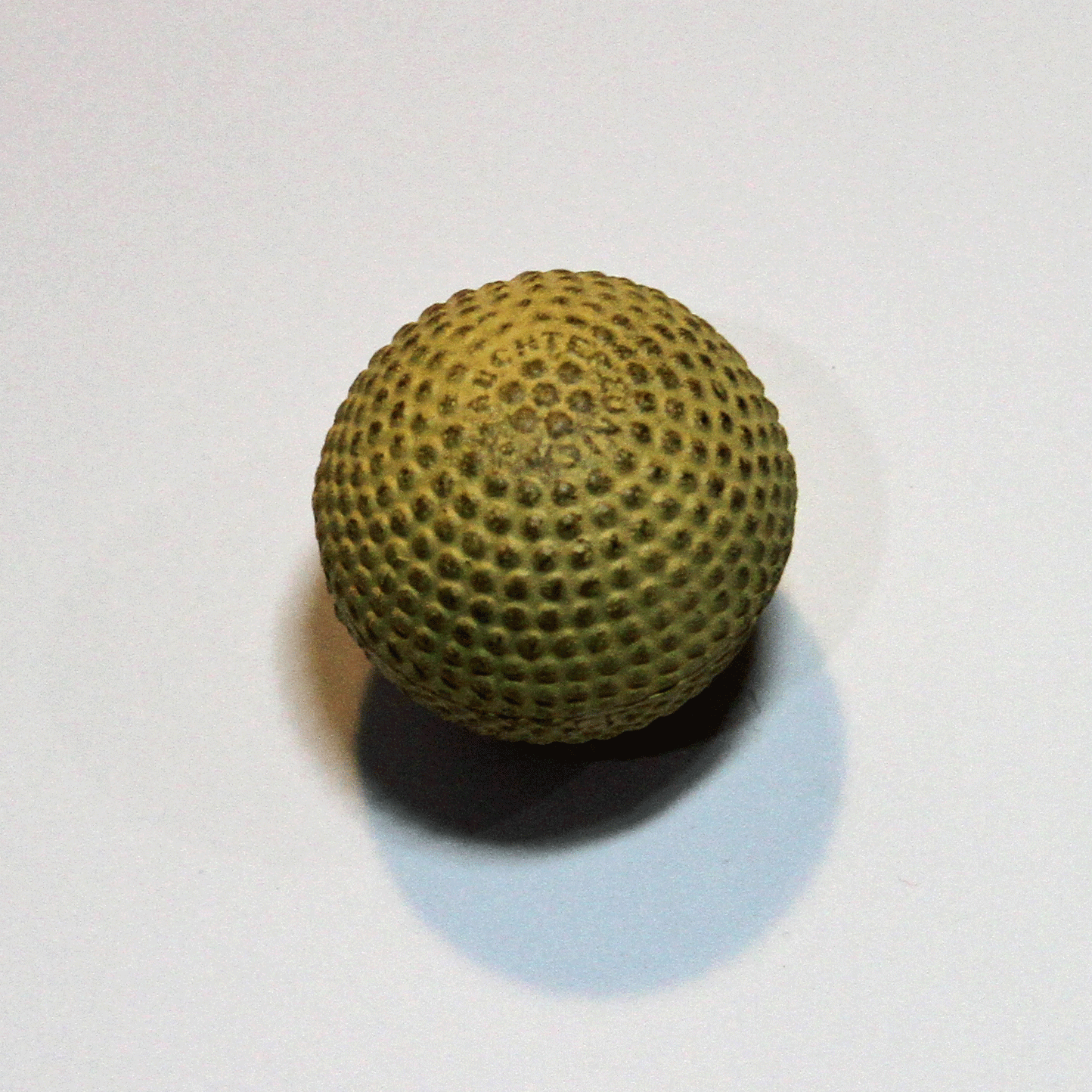

Your Custom Text Here
Surface textures and impressed onto gutta-percha balls evolved from early imitations of feathery ball stitching to highly detailed and symmetrical patterns that greatly improved the ball's flight. The best known balls were the hand-marked private brands of the Scottisn club makers, such as Morris, Robertson, Gourlay, and Auchterlonies.
Many brands with a variety of patent names used the bramble pattern - a surface similar to that of a berry. This became the most popular pattern of the gutta era, and was used on some early rubber balls as well.
Surface textures and impressed onto gutta-percha balls evolved from early imitations of feathery ball stitching to highly detailed and symmetrical patterns that greatly improved the ball's flight. The best known balls were the hand-marked private brands of the Scottisn club makers, such as Morris, Robertson, Gourlay, and Auchterlonies.
Many brands with a variety of patent names used the bramble pattern - a surface similar to that of a berry. This became the most popular pattern of the gutta era, and was used on some early rubber balls as well.